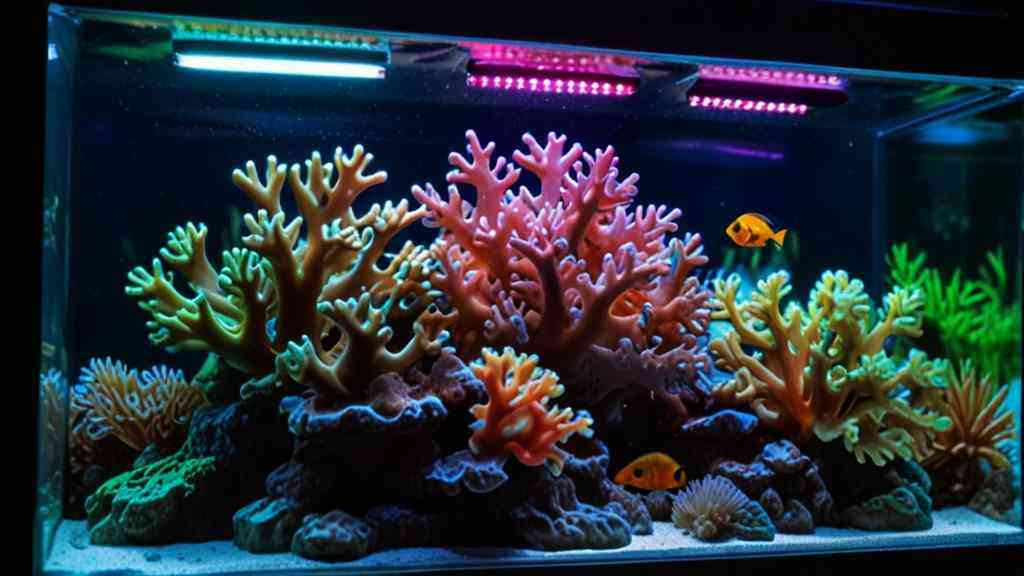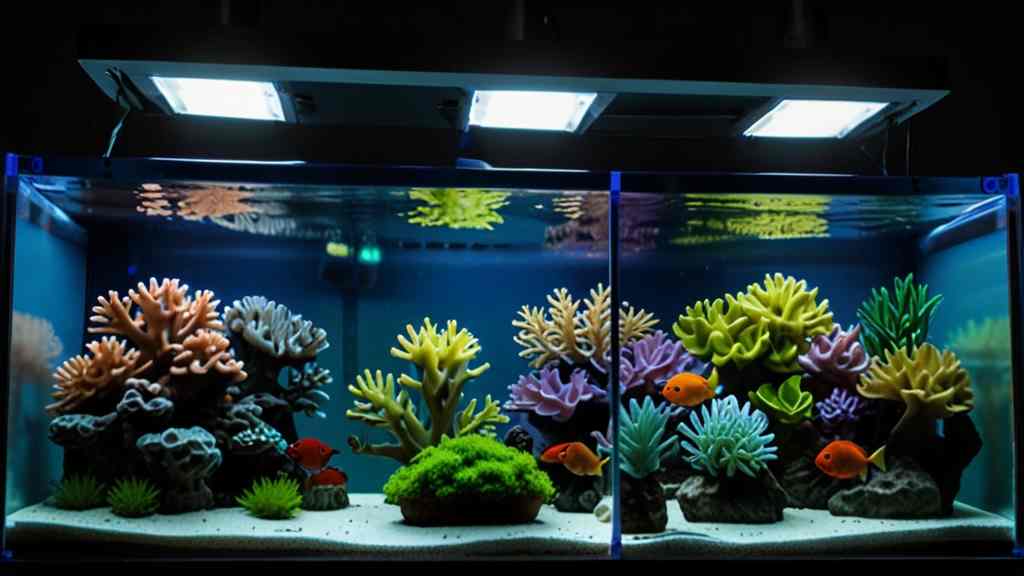Installing LED lighting for your reef aquarium can feel like navigating a maze. But don’t worry, I’ve got you covered! This guide will walk you through the process step-by-step, ensuring your corals get the light they need to thrive. Let’s dive into LED reef aquarium lighting!
Why Choose LED Lighting for Your Reef Aquarium?
LED lighting has become the go-to choice for reef aquariums, and for good reason. Here’s why:
- Energy Efficiency: LEDs consume less power compared to traditional lighting options, saving you money on electricity bills.
- Longevity: LEDs have a longer lifespan, reducing the frequency of replacements.
- Customizability: You can adjust the light spectrum and intensity to meet the specific needs of your corals.
- Heat Reduction: LEDs produce less heat, minimizing the risk of overheating your tank.

Tools and Materials You’ll Need
Before you start, gather the following tools and materials:
- LED lighting system (ensure it’s suitable for reef aquariums)
- Mounting brackets or hanging kit
- Power supply and timer
- PAR meter (optional but recommended)
- Screwdriver and screws
- Measuring tape
- Ladder or step stool
Step-by-Step LED reef Aquarium Lighting Installation Guide

Plan Your Setup
Start by planning where you’ll place your LED lights. Consider the size and shape of your aquarium, as well as the types of corals you have. Different corals have varying light requirements, so placement is crucial.
- Measure Your Tank: Use a measuring tape to determine the dimensions of your tank. This will help you decide how many LED fixtures you need and where to place them.
- Determine Light Intensity: Use a PAR meter to measure the light intensity at different points in your tank. This will help you ensure your corals receive the right amount of light.
Mount the LED Lights
Mounting your LED lights correctly is essential for even light distribution and aesthetic appeal.
- Choose Mounting Method: Decide whether you’ll use mounting brackets or a hanging kit. Mounting brackets are ideal for rim-mounted setups, while hanging kits work well for suspended installations.
- Install Mounting Brackets: If using brackets, attach them to the rim of your tank. Ensure they are secure and level.
- Hang the Lights: If using a hanging kit, attach the lights to the suspension cables and adjust the height. The optimal height varies, but a good starting point is 8-12 inches above the water surface.
Connect the Power Supply
Connecting the power supply is straightforward but requires caution to avoid electrical hazards.
- Position the Power Supply: Place the power supply in a dry, well-ventilated area away from water splashes.
- Connect the Wires: Follow the manufacturer’s instructions to connect the wires from the LED lights to the power supply. Ensure all connections are secure.
- Set Up the Timer: Use a timer to automate the lighting schedule. A typical photoperiod for reef tanks is 8-10 hours of light per day.
Adjust the Light Spectrum and Intensity
Customizing the light spectrum and intensity is key to meeting the needs of your corals.
- Use the Controller: Most LED systems come with a controller that allows you to adjust the light spectrum and intensity. Start with a balanced spectrum that includes blue, white, and UV light.
- Monitor Coral Response: Observe how your corals respond to the light. Adjust the settings as needed to promote optimal growth and coloration.
Regular Maintenance
Maintaining your LED lighting system ensures its longevity and effectiveness.
- Clean the Lights: Regularly clean the LED fixtures to remove salt creep and dust. Use a soft cloth and avoid harsh chemicals.
- Check Connections: Periodically inspect the electrical connections to ensure they remain secure and free from corrosion.
- Monitor Light Intensity: Use a PAR meter to periodically check the light intensity and make adjustments as needed.
Tips for Success
- Avoid Overheating: Ensure adequate ventilation around the LED fixtures to prevent overheating.
- Gradual Adjustments: When changing light settings, make gradual adjustments to avoid shocking your corals.
- Backup Power: Consider using a backup power source to keep your lights running during power outages.
Common Mistakes to Avoid
- Incorrect Placement: Placing lights too close or too far from the water surface can lead to inadequate or excessive light exposure.
- Ignoring Coral Needs: Different corals have different light requirements. Research the needs of your specific corals and adjust the lighting accordingly.
- Neglecting Maintenance: Failing to clean and maintain your LED lights can reduce their effectiveness and lifespan.
Conclusion
Installing LED lighting for your reef aquarium doesn’t have to be daunting. With the right tools, careful planning, and regular maintenance, you can create a thriving underwater paradise. Remember, the key to success is understanding the needs of your corals and providing them with the optimal light conditions. Happy reefing!



